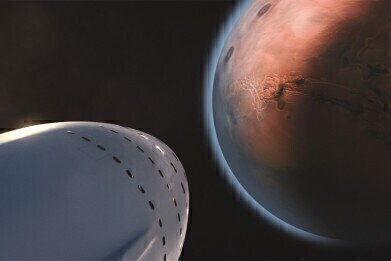News & Views
Could Mars Visit Harm Astronauts? Studies on Mice Say Yes!
May 27 2015
A new study has shown that astronauts might face a serious risk whilst on Mars. This could prove to be a fundamental problem for the planned Mars Mission. For more information about the planned Mars Mission read: What is the Mars One Mission?
What problems do the Mars astronauts face?
The research took place at NASA’s University of California, Irvine, US. Here, scientists bombarded mice with the same kinds of high energy particle streams found in galactic cosmic rays. Afterwards it was found that the mice has suffered damage to the nervous system. This caused a drop in their performance rate when tested.
“This is not positive news for astronauts deployed on a two- to three-year round trip to Mars,” said Charles Limoli, a professor of radiation oncology at the university.
“Performance decrements, memory deficits, and loss of awareness and focus during spaceflight may affect mission-critical activities, and exposure to these particles may have long-term adverse consequences to cognition throughout life,” he added.
The mission to Mars has long focused on the technological problems of getting humans to the planet. Once the pragmatics of these problems were solved, the attention then turned to any psychological factors that might affect the astronauts. This new research will have serious implications for the manned crews, who will certainly have to perform at their best, both mentally and physically. This is to be able to survive in the harshest of conditions.
“This is not a deal breaker but it represents an issue NASA needs to prepare for,” Limoli told the Guardian.
“It could develop into performance-based decrements and elevated anxiety and affect the ability to problem solve. These effects are likely to be subtle, however, and would not preclude our efforts to plan future manned deep space missions.”
How will galactic cosmic rays affect the Mars’ astronaut’s brains?
During the study, the mice spent a brief period of time within a single beam of high-energy oxygen and titanium particles. These particles replicate the cosmic rays of the universe.
They were then examined at Limoli’s lab where it was discovered that their brains were inflamed. This inflammation affected communications between neurons, and subsequent brain images showed damage in these areas.
How does the brain communicate?
Neurons signal to each other via dendrites, which look like tiny branches, which are located at the end of each neuron. After six weeks of being exposed to the cosmic rays, it was found that the mice had fewer dendrites. The rays appeared to have knocked these branches off, which is a similar process to other degenerative diseases such as Alzheimer’s.
Scientists tested the rodent’s subsequent behaviour by placing them in containers with toys, and then changing their positions or the toys. The mice who had undergone the study were shown to be less curious, and became much more easily confused.
Why are the Mars Mission astronauts more likely to be affected by cosmic rays?
Although the testing was carried out on mice, it is believed that a similar problem could develop with humans, with astronauts on long trips most at risk.
“Although the impairment of neurocognitive performance is undesirable in any circumstance, the impact of such decrements on the success of a deep space mission is likely to be especially problematic,” they add.
The problem is that the particles that typically make up these galactic cosmic rays come from stars that have exploded in the distant past. They are everywhere in the universe and as such, you cannot avoid them. Some space experts believe that a special shielding could be the answer, but as Limoli says: “There is really no escaping them.”
There are options in discussion, including medicines which protect the brain, but at present, NASA admits, there is a problem.
If you're interested in visiting Mars and want to know what it takes to be an astronaut, read our article: How to Become an Astronaut - Mars One vs. NASA.
Digital Edition
Lab Asia 31.2 April 2024
April 2024
In This Edition Chromatography Articles - Approaches to troubleshooting an SPE method for the analysis of oligonucleotides (pt i) - High-precision liquid flow processes demand full fluidic c...
View all digital editions
Events
Apr 22 2024 Marrakech, Morroco
Making Pharmaceuticals Exhibition & Conference
Apr 23 2024 Coventry, UK
Apr 23 2024 Kintex, South Korea
Apr 23 2024 Seoul, South Korea
Apr 24 2024 Jakarta, Indonesia








.jpg)









